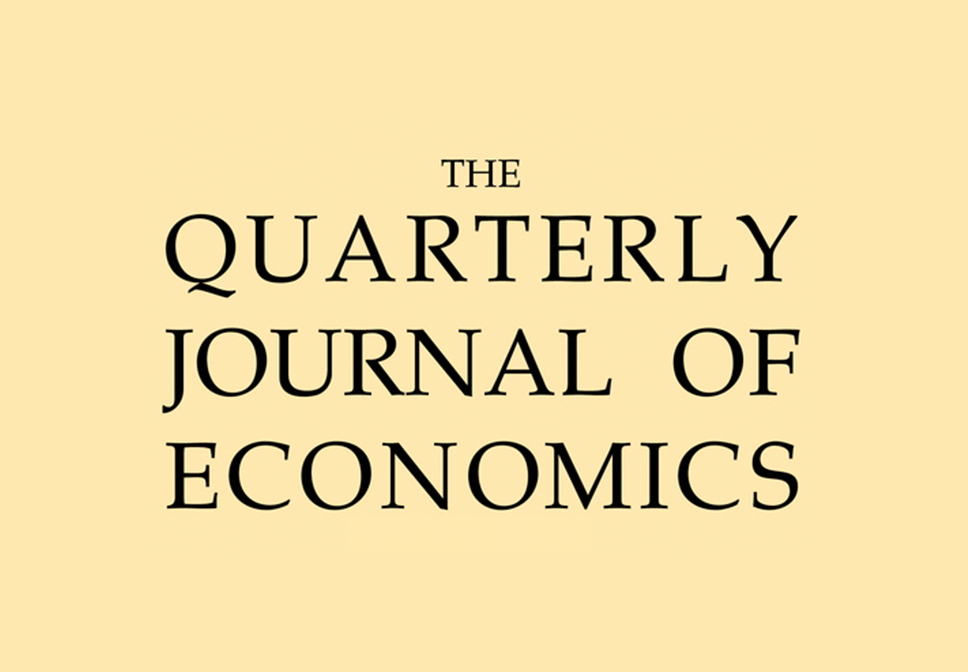New Research Sheds Light on the Economic Consequences of Evictions
Yale researchers use big data to study the link between evictions and poverty in Chicago and New York City.

What are the economic consequences of evictions? For the first time, researchers have combined eviction court records with detailed longitudinal data on socio-economic outcomes such as employment, hospital visits, and stays at emergency homeless shelters. Using a quasi-experimental design based on random assignment to judges, they find that evictions increase homelessness, reduce tenants’ earnings, and impede their access to credit. The results also suggest that Black and female tenants are more likely to face negative housing and employment outcomes.
While the negative consequences of evictions have been explored through anthropological and sociological case studies—one notable example is Matthew Desmond’s work, Evicted—there has been little rigorous quantitative analysis that sheds light on tenants’ economic outcomes. In most eviction studies to date, it has been difficult to track tenant outcomes following an eviction because eviction court data and administrative data are not linked. It is also difficult to distinguish between the effects of an eviction and the effects of correlated crises such as unemployment or declining health that commonly precede an eviction.
Access the Full Article
 Featured in the February 2024 issues of The Quarterly Journal of Economics, this groundbreaking new research was conducted by Yale economists John Eric Humphries and Winnie van Dijk, together with co-authors Robert Collinson (Notre Dame), Nicholas Mader (UChicago), Davin Reed (Spotify, previously Federal Reserve Bank of Philadelphia), and Daniel Tannenbaum (UNebraska).
Featured in the February 2024 issues of The Quarterly Journal of Economics, this groundbreaking new research was conducted by Yale economists John Eric Humphries and Winnie van Dijk, together with co-authors Robert Collinson (Notre Dame), Nicholas Mader (UChicago), Davin Reed (Spotify, previously Federal Reserve Bank of Philadelphia), and Daniel Tannenbaum (UNebraska).
Among OECD countries, the US has the highest number of evictions per renting household. However, both the circumstances under which tenants end up in eviction court and the financial, employment, and health outcomes of evictions remain poorly understood. Using a newly-constructed data set that links eviction court case filings to other administrative data sets, the researchers tracked tenant outcomes in the years before and after an appearance in court. Their findings may be informative as policymakers design prevention and intervention strategies for vulnerable tenants. Moreover, the database that they created for Chicago and New York may serve as a model for efforts to create similar data at the national level. See, for example, this Department of Housing and Urban Development report to Congress, which calls to “support research to explore the feasibility of linking eviction records to Census Bureau and administrative databases.”
What were the results? Evictions led to multiple—and often compounding—negative outcomes. Evictions led to short-run increases in homelessness and residential mobility. They also led to declines in financial health and credit scores, as well as increases in the number of hospital visits. Eviction orders often leave tenants with little time to find new housing arrangements and prior eviction orders can also make it harder to find new housing since many landlords screen potential tenants’ rental history. The study showed that an eviction order increased the probability of using an emergency shelter by 3.4 percentage points in the year following the eviction, representing a more than 300% increase relative to those who are not evicted. The effects on tenants’ interactions with homelessness services even persisted into the second year after eviction. These estimates are substantially larger for Black and female tenants, for which the probability of interacting with the homelessness system up to two years after eviction was 5.7 and 6.8 percentage points, respectively. Relative to those who are not evicted, this represents a 467% increase for Black tenants and a 307% increase for female tenants.
Annual earnings following an eviction decreased by an average of roughly $1,300 in the first year, and $2,400 in the second year, amounting to a nearly 15 percent drop in income (from a sample baseline of $17,200 per year). These effects are more pronounced in Cook County than in New York, and also stronger for Black and female tenants in both locations.
Individuals and families going through the eviction court process are often facing additional adversities, and this research shows that evictions are typically precipitated by job loss or declining health up to two years prior. Future research could evaluate both eviction-preventive policies, such as emergency financial assistance and free legal aid, as well as eviction-responsive policies, such as homelessness diversion programs and subsidized housing.
 To take a closer look at the motivations, outcomes, and policy implications of this work, we sat down for an interview with one of the authors, Yale economist John Eric Humphries.
To take a closer look at the motivations, outcomes, and policy implications of this work, we sat down for an interview with one of the authors, Yale economist John Eric Humphries.
What was the primary motivation behind this research? We first started thinking about this topic after one of us attended a pre-release talk by Matthew Desmond about his book, Evicted. The book reports on his detailed ethnographic research in Milwaukee, and we thought there was an opportunity to complement his findings with quantitative evidence on the central thesis of the book: that eviction is not just a consequence, but also a cause of poverty and hardship. However, a key challenge in quantifying the causal impacts of evictions is that they are anything but random, making it difficult to separate out causation from correlation. Many people face personal crises before they are evicted, such as job loss or health declines. Disentangling how much of the decline in wages, health, and other outcomes is caused by the eviction and how much is simply a continuation of the prior shock—meaning that we would have observed it even if the tenant had not been evicted—is a tricky problem.
We now have statistical tools to deal with this problem, but they require linking high-quality data on the court cases to subsequent outcomes. Through working with the US Census Bureau and several agencies in both New York and Chicago, the research team was able to construct such a data set and conduct a first-of-its-kind analysis.
What do you see as the main policy implications of this research? One of the things that we can observe even before we make any complicated causal inferences are negative trends in income, employment, and health prior to eviction. If tenants are experiencing adverse events 12 months prior to an eviction order in court, maybe court-based prevention programs—which are currently being considered or rolled out in several places across the country—are not the most effective way to address this problem. We might have to intervene earlier.
That being said, policy recommendations are not the goal of this paper. When we evaluate eviction policy, we have to know the cost of an eviction to the different stakeholders, namely the tenant, the landlord, and the government. Our paper tries to provide a high standard of evidence for costs faced by the tenant. More research is needed to complete the puzzle and be able to make informed policy recommendations. Even so, it is quite clear that there are also high costs to the government, especially when it comes to the increase in homelessness we document, since homelessness services are notoriously costly. There are likely ample opportunities for both preventive and responsive policies.
Where does this research lead you? What are some additional areas for exploration? Personally, I think there are three big questions which this paper leaves unanswered and which we are now working on. The first centers on pre-court intervention. We have to identify methods to target these programs to families at risk of housing instability for the interventions to be effective. We currently do not have a clear method of doing that. The second centers on how effective the court-level policies actually are. A few states and many cities now have a right to counsel in eviction court: programs under which tenants are provided with legal assistance from a lawyer. The costs of providing a lawyer are steep for governments, so we have to assess how much these policies are helping tenants, especially relative to cost-equivalent policies that provide financial assistance to tenants. We also have to look at how housing markets respond to these new tenant protections. If we make it too difficult to evict a tenant, we might make it more difficult for tenants seen as high-risk by landlords to find any housing at all. The third question centers on the children of those evicted, because eviction often disrupts a child’s living situation and their educational progress. Answering these three questions would go a long way to determining the right level and place for policy intervention.